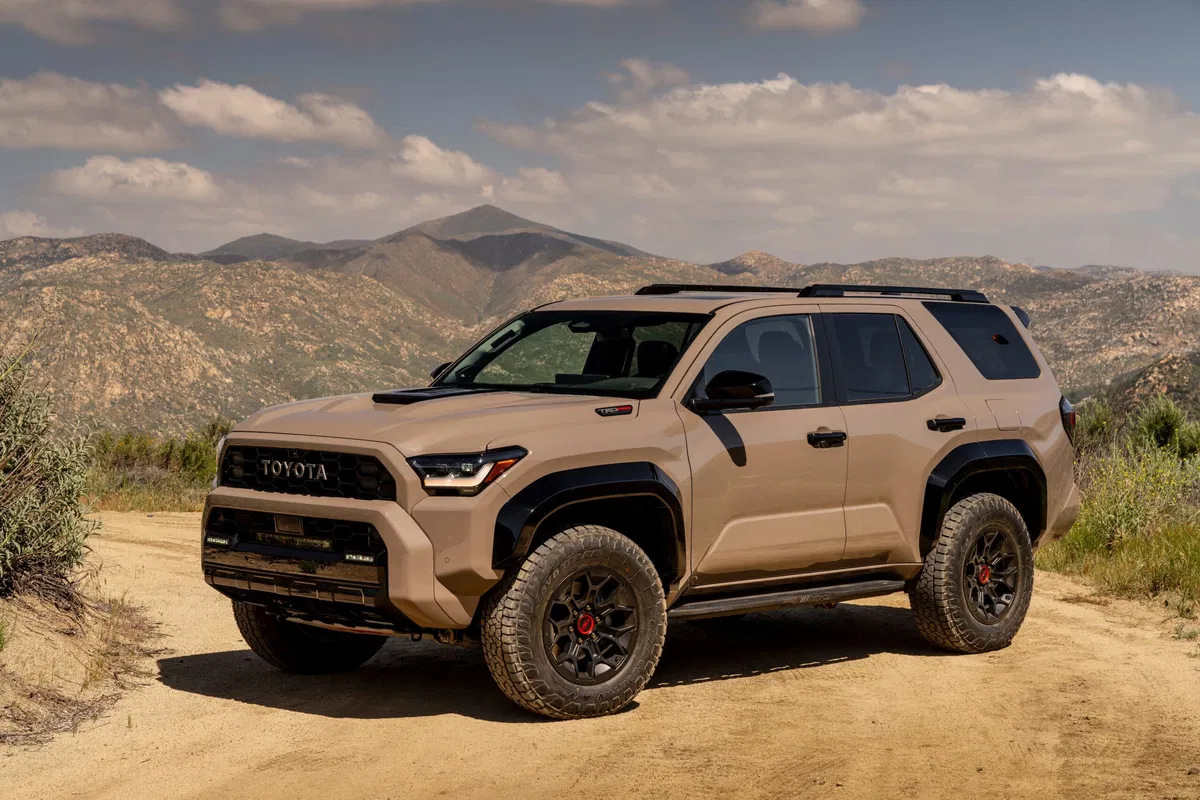For many car buyers, priorities typically orbit around fuel economy, reliability, horsepower, or tech features. However, one of the most underrated aspects of automotive design, especially in the age of longer commutes and crowded roads, is cabin noise. How quiet or noisy your vehicle is can have a dramatic effect on how enjoyable (or exhausting) it is to drive.
While this factor may not top the spec sheets, the presence of road noise, engine growl, or wind whistling through imperfect seals can wear on a driver more than one might expect.
Cabin quietness speaks volumes about a car’s build quality and the level of engineering attention paid to comfort. It also becomes more important in the context of hybrid and electric vehicles, where powertrains go silent and any ambient noise becomes magnified.
Toyota, a brand celebrated globally for its unmatched reliability and practicality, offers a wide array of vehicles that span from minimalist compacts to plush, near-luxury sedans and family haulers.
Within this wide range lies a spectrum of cabin refinement, with some models standing out for their serenity and silence, and others revealing compromises in noise insulation, often due to priorities that lean more toward ruggedness, affordability, or performance.
Models like the Avalon and Highlander Hybrid have earned a reputation for being rolling sanctuaries, while the Tacoma and 4Runner, while incredibly dependable and adventure-ready, don’t exactly provide a hushed ride. These differences aren’t simply quirks—they’re reflections of what each vehicle was designed to do and who it was built for.
Toyota’s approach to quietness is heavily influenced by trim level, generation, and intended purpose. Many of their hybrid or top-tier trims feature acoustic glass, sound-deadening foam, and even active noise cancellation systems that significantly reduce unwanted sound.
On the other end, vehicles intended for off-road use or budget-conscious segments may feature more hard plastics, thinner doors, and fewer layers of insulation—all of which contribute to a noisier experience inside. Interestingly, some of Toyota’s quietest models are also its most fuel-efficient, showing that refinement and economy can go hand-in-hand.
In this article, we dive deep into both sides of Toyota’s lineup, exploring five models that truly excel in delivering an ultra-quiet cabin experience, as well as five that suffer from buzz, hum, and road drone more than drivers might expect.
Each model is analyzed not just from a comfort standpoint, but in context, acknowledging whether its noise levels are a justified trade-off or an unfortunate oversight.
Whether you’re in the market for your next commuter vehicle, a family road tripper, or a weekend warrior SUV, knowing where a model stands in terms of cabin noise can help you make an informed, satisfying choice. Because at the end of the day, silence isn’t just golden—it’s a sign of quality.
Also Read: 5 Cars That Keep Working in Texas Heat and 5 That Overheat Instantly
5 Toyota Models with Ultra-Quiet Cabins

1. Toyota Avalon
The Toyota Avalon has consistently positioned itself as the most refined and comfortable sedan under the Toyota badge, a vehicle often compared to entry-level Lexus models for good reason.
One of Avalon’s most defining qualities is the remarkable quietness of its cabin. This serene atmosphere is no accident—it’s the result of meticulous engineering and an aggressive approach to noise reduction.
Toyota fitted the Avalon with laminated acoustic glass, triple-layer door seals, and a wealth of insulation materials throughout the cabin, including beneath the carpeting, inside the dashboard, and within the pillars.
These enhancements reduce airborne and structural noise, creating a sound-deadening envelope that makes the Avalon feel like it’s in a class above most non-luxury sedans.
Beyond structural noise isolation, the Avalon’s suspension system contributes heavily to its quiet demeanor. It uses a soft-tuned, fully independent suspension that absorbs road imperfections with grace, minimizing the transfer of harsh vibrations into the cabin.
Toyota’s engineers paid special attention to damping and ride compliance, resulting in a smooth, quiet ride even over rough or uneven pavement.
The body structure is also remarkably rigid, helping to reduce squeaks and rattles over time—common issues that often increase a vehicle’s noise level as it ages. Combined, these features ensure that both driver and passengers enjoy a whisper-quiet environment regardless of the road surface or weather conditions.
Powertrain noise is also expertly managed. Whether you opt for the silky 3.5-liter V6 or the fuel-efficient hybrid model, the Avalon delivers power with minimal fuss or intrusion. The hybrid version in particular is a standout, as it can cruise in EV mode at low speeds without engaging the gas engine, making it nearly silent in city driving.
When the gasoline engine does come into play, it does so with hushed efficiency, never sounding strained or intrusive. Together, these attributes make the Avalon not just a quiet car, but one of the quietest non-luxury vehicles Toyota has ever produced—a rolling sanctuary that excels in long-distance cruising and daily driving alike.
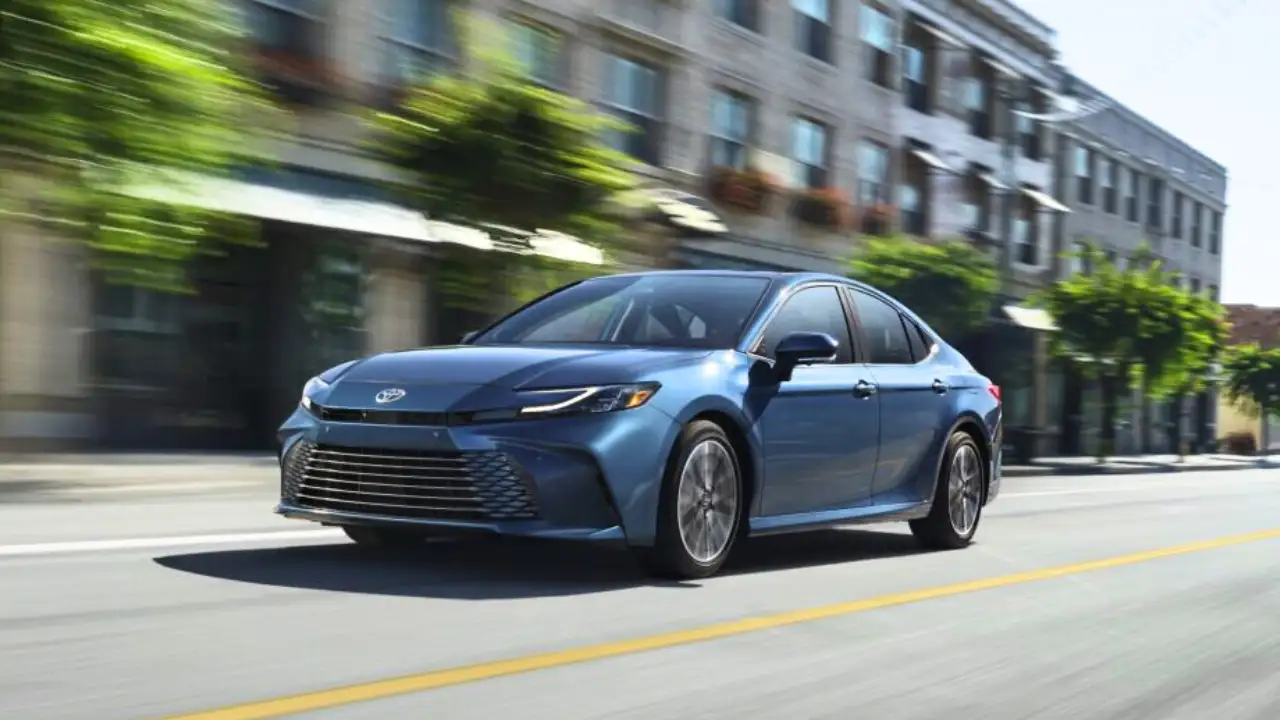
2. Toyota Camry (Hybrid and XLE Trims)
The Camry, especially in its Hybrid and XLE configurations, is one of the best examples of how Toyota blends mainstream appeal with near-premium comfort.
While the Camry name may not immediately evoke luxury, these upper trims are equipped with a suite of noise-reducing features that elevate the car well beyond the average mid-size sedan.
Toyota engineers focused on blocking road and engine noise by integrating thick sound insulation into the dashboard, firewall, and undercarriage. Laminated glass in the front windows, improved door seals, and underbody panels contribute to a ride experience that’s unusually calm and quiet for a vehicle in this class.
Much of the Camry Hybrid’s quietness stems from its seamless transition between electric and gasoline propulsion. At low speeds or while coasting, the car often operates purely on electric power, resulting in near-silent operation. This means city commutes and start-stop traffic become remarkably peaceful.
Even under moderate acceleration, the hybrid powertrain remains unobtrusive, with the gas engine kicking in gently and without the usual whine or roar associated with internal combustion.
Toyota’s hybrid synergy drive has matured over the years into one of the smoothest systems available, and the Camry showcases it at its best. Even the engine itself, a 2.5-liter four-cylinder, is notably quiet and vibration-free, even when pushed hard.
The cabin materials and construction also play a role in maintaining tranquility. Toyota uses soft, sound-absorbing materials on the dashboard, doors, and even the headliner. In higher trims like the XLE, the quality of the materials steps up even further, with added insulation behind the panels and premium touches that dampen interior echoes.
The JBL audio system, standard in XLE and optional in others, is another beneficiary of this quiet environment, delivering studio-like sound quality thanks to the absence of background interference. For drivers who want a comfortable and hushed ride without jumping into luxury pricing, the Camry Hybrid and XLE trims hit a near-perfect balance.
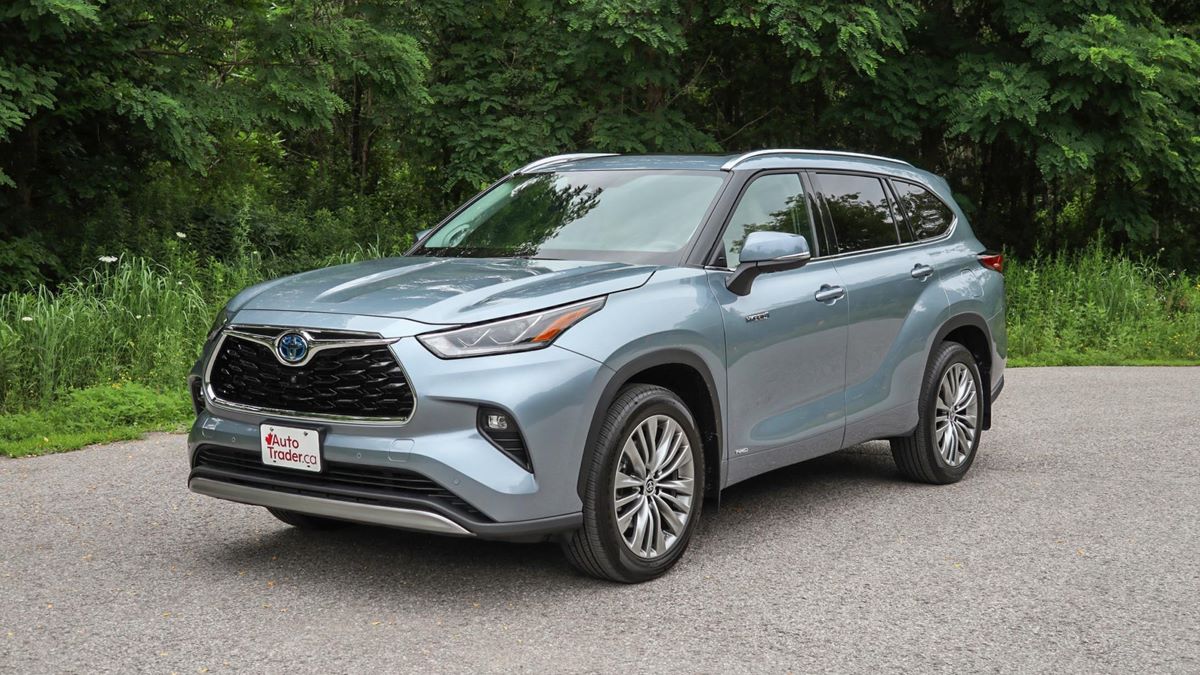
3. Toyota Highlander (Especially Hybrid Platinum)
The Toyota Highlander, particularly in the Hybrid Platinum trim, exemplifies how a three-row family SUV can deliver not only space and utility but also an impressively quiet, composed ride.
Toyota has infused the Highlander with thick acoustic treatment from top to bottom, including laminated windshield and front windows, extra body sealing, and sound-deadening insulation in critical areas like the wheel wells, firewall, and floor.
These measures significantly reduce intrusion from wind, road, and engine noise, even when the vehicle is packed with passengers and cargo. The Hybrid Platinum trim takes it a step further with additional acoustic touches typically reserved for luxury models.
A major contributor to the Highlander’s low cabin noise is its hybrid powertrain, which operates with impressive smoothness and discretion. In the Hybrid Platinum model, the electric motors provide silent propulsion at lower speeds, while the gas engine joins in so quietly that many drivers report barely noticing the transition.
The electronically controlled continuously variable transmission (eCVT) avoids gear-hunting and harsh downshifts, delivering linear acceleration without excessive engine noise.
This makes freeway cruising and stop-and-go driving equally peaceful. Combined with a well-insulated cabin, the hybrid powertrain ensures the Highlander offers a hushed, almost whisper-quiet ride under most driving conditions.
Inside, the cabin design supports and enhances the quiet ride. Soft-touch materials line the dashboard and door panels, while the plush seating and tight build tolerances eliminate the creaks and rattles common in large SUVs. Even rear passengers benefit from noise control, thanks to insulated rear wheel arches and a carefully designed cargo area that resists echoing.
This makes conversations in the third row possible without raised voices and allows kids to nap undisturbed during long trips. The Highlander Hybrid Platinum may be designed for family use, but its attention to acoustic comfort places it well within reach of true luxury SUV territory.
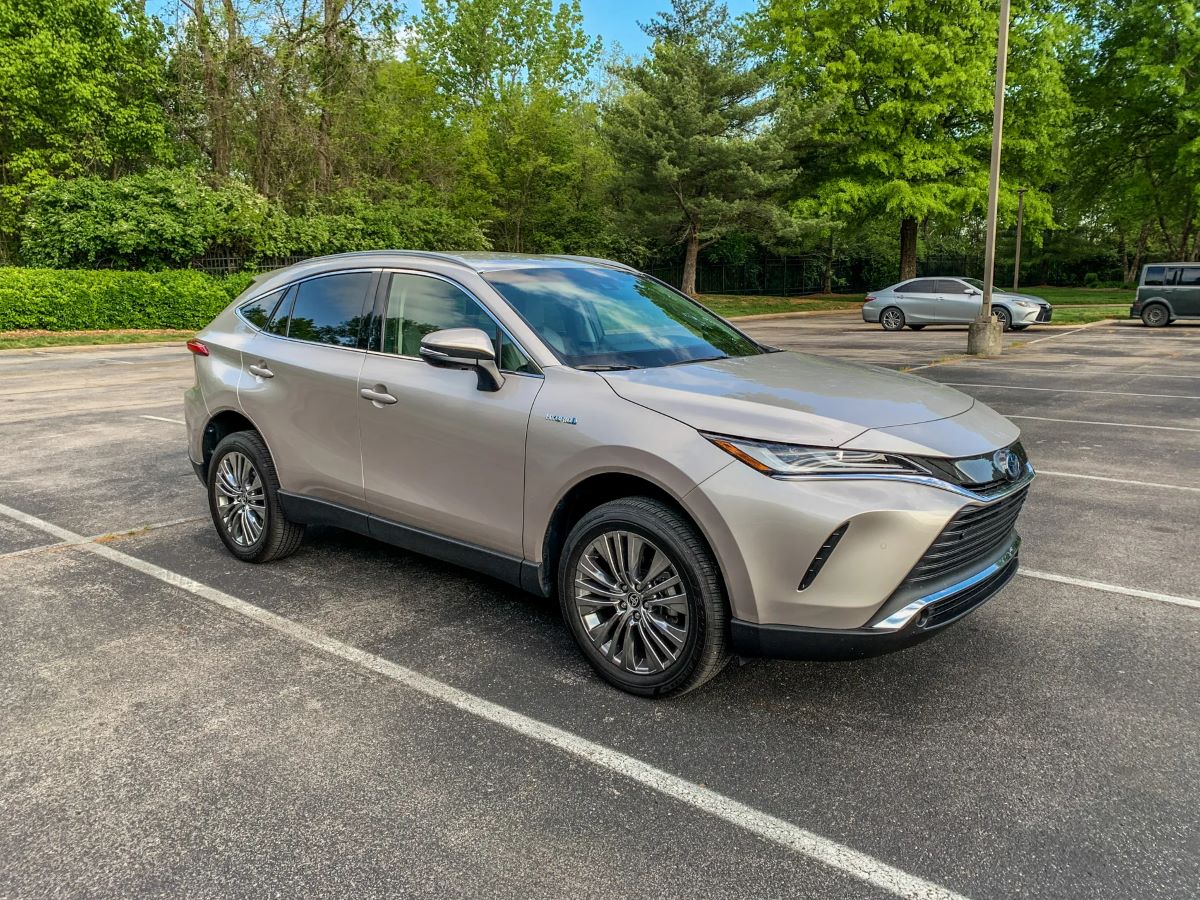
4. Toyota Venza
The reborn Toyota Venza stands out in the crossover market not just for its sleek styling and all-hybrid powertrain, but for the serene silence of its cabin. Built on the same TNGA-K platform as the Highlander and Camry, the Venza has been specifically engineered for premium comfort, emphasizing ride quality, interior materials, and noise reduction.
Toyota equipped the Venza with comprehensive soundproofing measures, including body cavity fillers, door and roof insulation, and acoustic windshield and side glass. This all adds up to a vehicle that delivers a consistently quiet driving experience, regardless of whether you’re gliding through city traffic or cruising at highway speeds.
The Venza’s hybrid system contributes significantly to its hushed demeanor. At low speeds, the vehicle runs purely on electricity, allowing it to move silently through neighborhoods or traffic-laden streets. When the gasoline engine is needed, it engages without drama or noticeable vibration, keeping the cabin experience calm and composed.
The eCVT transmission also plays a role, operating smoothly and quietly without the mechanical commotion often associated with traditional gearboxes. Even when accelerating onto the freeway or climbing steep inclines, the Venza maintains a calm, subdued acoustic profile that few vehicles in its price range can match.
Toyota didn’t just focus on the mechanical and structural elements; the Venza’s interior design also supports the theme of peace and quiet. The seats, dashboard, and door cards are all crafted from soft-touch materials that help muffle sound reflections inside the cabin.
The fit and finish are tight and deliberate, minimizing the possibility of future rattles or squeaks. Additionally, the available panoramic electrochromic glass roof helps block out external noise and heat while adding to the sense of serenity. All of this makes the Venza one of the most acoustically refined non-luxury SUVs Toyota has ever made—a genuine sleeper hit for buyers who crave comfort and calm.
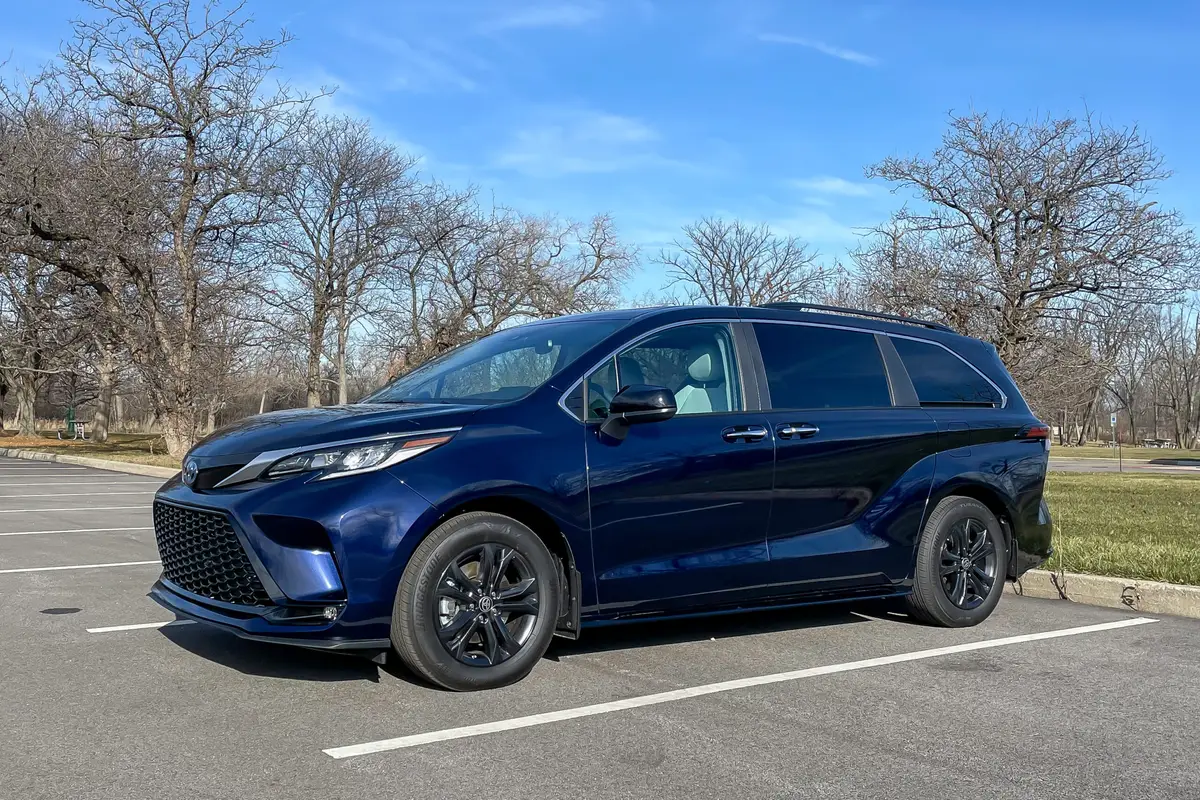
5. Toyota Sienna (2021–Present, Hybrid Only)
The Toyota Sienna, redesigned from 2021 onward as a hybrid-only minivan, is one of the most refined and family-friendly vehicles Toyota offers, especially in terms of in-cabin quietness.
Knowing that its target audience would be transporting children, conducting conversations, or enjoying long family trips, Toyota took great care to insulate the Sienna’s interior against unwanted noise.
The result is a vehicle that feels more like a rolling living room than a conventional van. From the use of thicker glass and triple-sealed doors to strategic use of sound-absorbing foam throughout the chassis, the Sienna delivers a noticeably tranquil ride, no matter where you’re seated.
The hybrid powertrain enhances the serenity even further. With its electric motors handling many low-speed driving scenarios, the Sienna often runs with no engine noise at all. Even under acceleration or highway cruising, the gas engine engages subtly, keeping noise and vibration to a minimum.
The continuously variable transmission avoids the sharp shifts and gear whine that sometimes plague other vans, allowing power delivery to feel smooth and undistracting. These mechanical advantages translate into an environment where conversations, podcasts, and music can be enjoyed clearly and comfortably, even in the far-back third row.
Inside, the cabin materials and layout have been deliberately chosen to support noise control. Soft fabrics, thick carpeting, and well-damped panels absorb and mute vibrations rather than amplifying them. The sliding doors and large windows are tightly sealed to prevent wind rush, even when driving at high speeds. Engineers even minimized noise from HVAC systems and power seat motors to preserve the cabin’s peaceful atmosphere.
Whether you’re shuttling kids to school or taking a cross-country road trip, the 2021+ Toyota Sienna offers one of the quietest and most refined family environments available in a non-luxury vehicle—proof that practicality and premium comfort aren’t mutually exclusive.
5 Toyota Models That Buzz Loudly
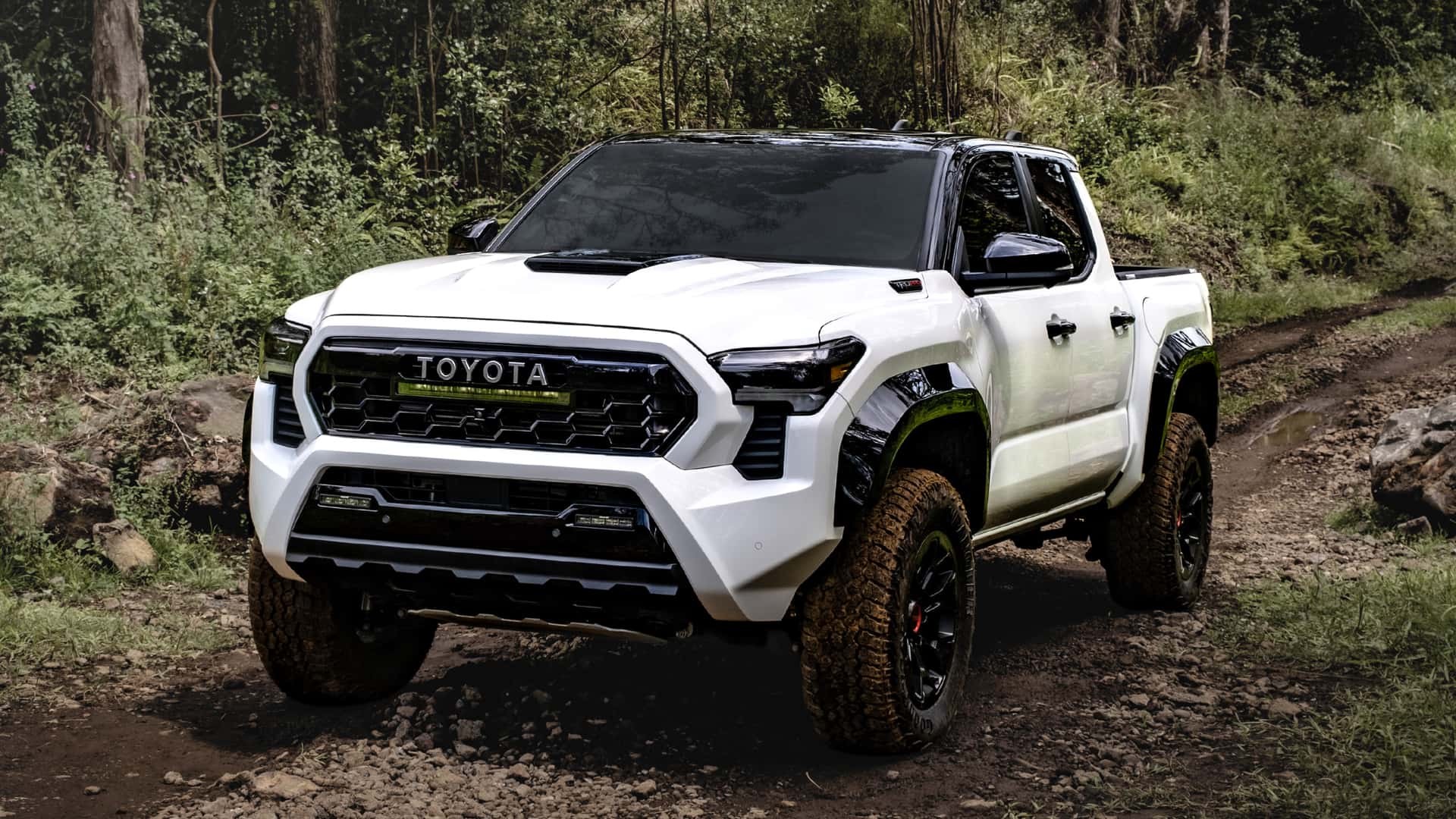
1. Toyota Tacoma (Especially 2016–2023 Models)
The Toyota Tacoma is known for its rugged durability and off-road prowess, but quiet it is not—especially in the 2016 to 2023 model years. Toyota designed the Tacoma with adventure in mind, prioritizing a body-on-frame structure and firm suspension over interior tranquility.
As a result, the cabin transmits a considerable amount of noise from the road, engine bay, and suspension components. Wind noise becomes prominent at highway speeds due to the vehicle’s upright stance, large mirrors, and less aerodynamic profile. Combined with a stiff ride, the result is a constant stream of low-level vibrations and buzzes that make long trips more tiring than they should be.
The powertrain also plays a key role in the Tacoma’s acoustic shortcomings. The 3.5-liter V6 engine, while capable, produces a coarse sound under acceleration. Paired with a six-speed automatic transmission that tends to hunt for gears, the engine often revs high under load, creating a droning effect that fills the cabin.
Even the manual transmission variants aren’t immune—the clutch and gearbox have a mechanical clunkiness that adds to the noise profile. Engine noise is particularly intrusive when towing or driving up steep inclines, where the revs climb and the cabin’s insulation struggles to keep up.
Additionally, the interior materials used in the Tacoma—especially in the lower trims—don’t do much to dampen sound. Hard plastics dominate the cabin, and minimal use of sound-deadening material under the floors and in the doors means road noise filters in with little resistance.
Owners frequently report creaks and rattles developing over time, particularly in the dashboard and center console areas, especially when the truck is driven on rough terrain. These shortcomings make the Tacoma a standout in durability, but not in comfort or cabin serenity. For buyers who prioritize quiet, refined commuting, the Tacoma may fall short of expectations.
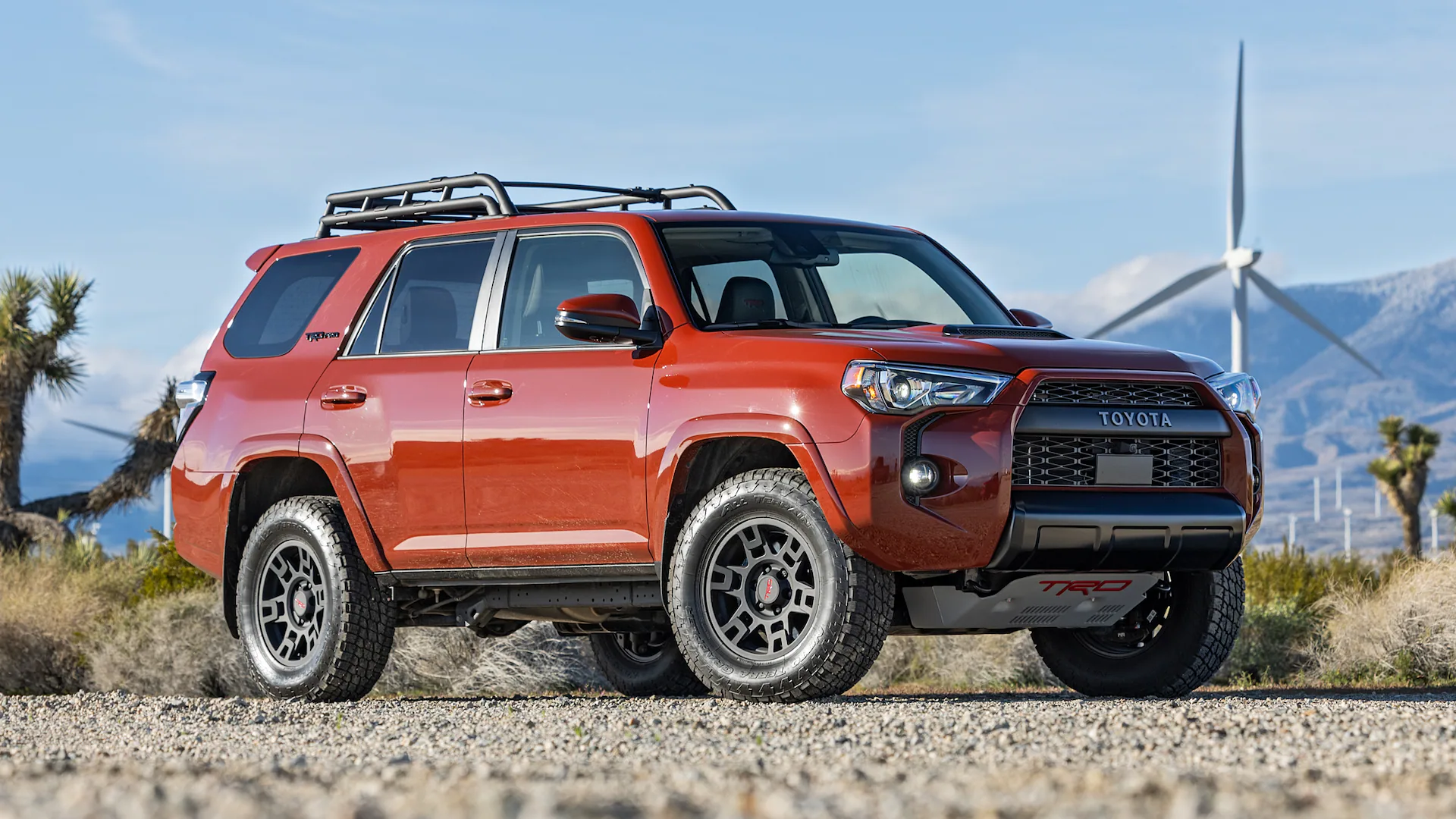
2. Toyota 4Runner
Like the Tacoma, the Toyota 4Runner is a legend in off-road and overlanding circles, but its old-school design makes for a noisy cabin, particularly in daily driving.
Built on an aging platform that dates back over a decade, the 4Runner’s body-on-frame construction inherently allows more vibration and noise into the interior than a unibody SUV would.
Road noise is particularly evident, especially on coarse or broken pavement, as the suspension and tires transmit significant energy into the cabin. Despite multiple facelifts over the years, Toyota has done little to improve the 4Runner’s sound insulation, and it shows when compared to more modern competitors.
The 4Runner’s engine noise is another issue. The 4.0-liter V6, while reliable and torquey, is far from refined. It sounds gruff and industrial, particularly under hard acceleration or when climbing hills.
The five-speed automatic transmission, which is outdated by today’s standards, doesn’t help—it holds gears longer than necessary and fails to capitalize on power delivery smoothly.
This setup results in high engine revs during freeway merges and overtaking, generating a loud drone that easily penetrates the cabin. Many owners accept this as part of the 4Runner’s charm, but it undeniably contributes to driver fatigue on long drives.
The interior design of the 4Runner compounds the noise problem. With expansive hard plastics and minimal use of insulating materials, vibrations aren’t absorbed so much as they are amplified. The boxy shape and upright windshield create aerodynamic drag that produces wind noise even at moderate speeds.
While the 4Runner excels off-road and in harsh conditions, the cabin does little to shield occupants from the outside world. For those who use the 4Runner primarily as a daily driver, the lack of acoustic refinement can be a significant drawback in an otherwise capable and beloved vehicle.

3. Toyota Yaris (Especially Older Generations)
The Toyota Yaris, especially models built before the 2020 redesign, is one of the noisiest vehicles in Toyota’s lineup. As a subcompact designed primarily for affordability and efficiency, the Yaris was never engineered with cabin tranquility in mind.
From the moment you start the engine, you’re greeted with a pronounced hum from the small displacement powertrain, which becomes a near-constant presence at highway speeds.
The engine, while peppy for its size, is high-revving and unrefined, producing a droning exhaust note that is especially noticeable when accelerating or climbing hills. The CVT and 4-speed automatic transmissions used in older models only exacerbate this issue by holding the engine at high RPMs.
Road and tire noise are particularly intrusive in the Yaris, primarily because of its lightweight structure and minimal insulation. The small wheel wells and economy-grade tires offer little in the way of sound suppression, meaning the buzz of the pavement is constantly transmitted into the cabin.
Coarse surfaces like grooved concrete or pothole-ridden streets create a cacophony of vibration and feedback. Wind noise is also a problem, especially on the highway, where the car’s boxy profile and basic door seals fail to keep external sounds at bay. Without any aerodynamic aids or acoustic glass, the Yaris has little to offer in terms of soundproofing.
Interior materials do little to mitigate the noise. The cabin is filled with thin plastic panels that echo and vibrate with road imperfections, and the seat padding isn’t dense enough to absorb shock or suppress vibration. This results in a ride that feels busy and loud, even at moderate speeds.
For city use, the Yaris can be a reliable and economical option, but extended highway drives often prove fatiguing. It’s a car that makes its affordability known not just through cost, but through the constant feedback of its environment—ideal for budget-conscious drivers, but far from a relaxing experience.
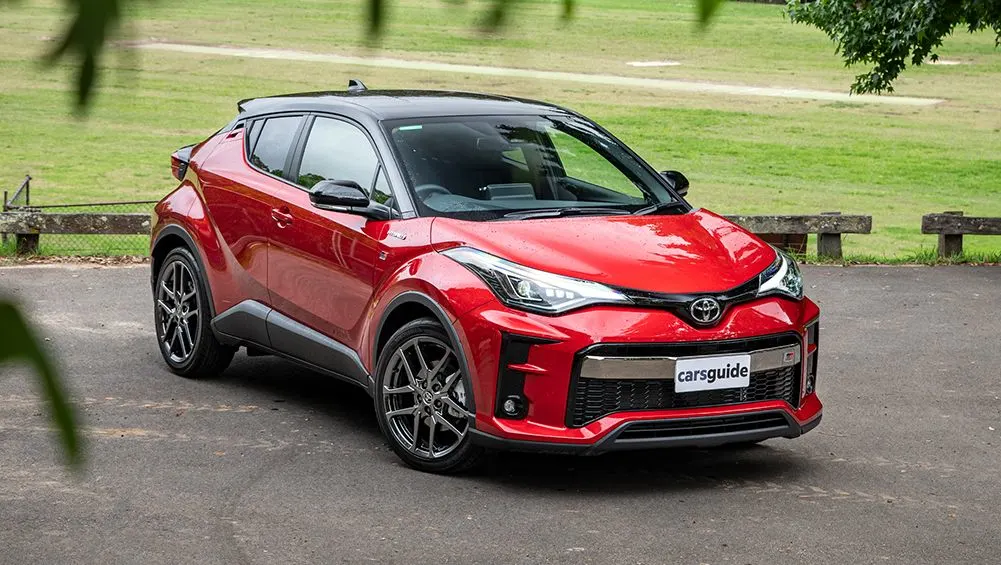
4. Toyota C-HR
Toyota’s C-HR is a stylish subcompact crossover that garnered attention for its bold design, but behind the futuristic looks lies a cabin experience that’s louder than it should be. While the C-HR excels in maneuverability and visual flair, it falters in terms of ride refinement, especially when it comes to noise isolation.
The coupe-like body style and sloped roofline generate a surprising amount of wind noise at highway speeds, which seeps into the cabin due to minimal acoustic insulation in the A-pillars and front doors. Unlike other small crossovers in its class that focus on comfort, the C-HR seems to have prioritized aesthetics over acoustic engineering.
The powertrain, a 2.0-liter four-cylinder mated to a CVT, is another source of unwanted noise. Under even modest acceleration, the CVT lets the engine rev freely, creating a droning noise that’s ever-present when merging or passing. While Toyota’s CVT is more refined than some competitors’, the lack of gear changes creates a static, monotone sound that becomes irritating on longer drives.
The engine itself is also tuned more for efficiency than performance, and the result is a strained-sounding unit that doesn’t match the vehicle’s athletic design cues. Even with modest throttle inputs, the cabin fills with a high-pitched buzz that detracts from the driving experience.
Cabin design choices further contribute to the issue. While the interior is stylish and modern, it relies heavily on hard plastics and lacks substantial padding that could absorb or dampen sound. The doors and floorpan feel thin, and tire noise is particularly noticeable on anything but the smoothest roads.
Toyota marketed the C-HR toward younger, urban drivers, but those seeking a quiet, refined cabin may be disappointed. It’s a car that succeeds in making a visual statement, but one that also serves as a reminder that style doesn’t always equal substance, especially in terms of acoustic comfort.
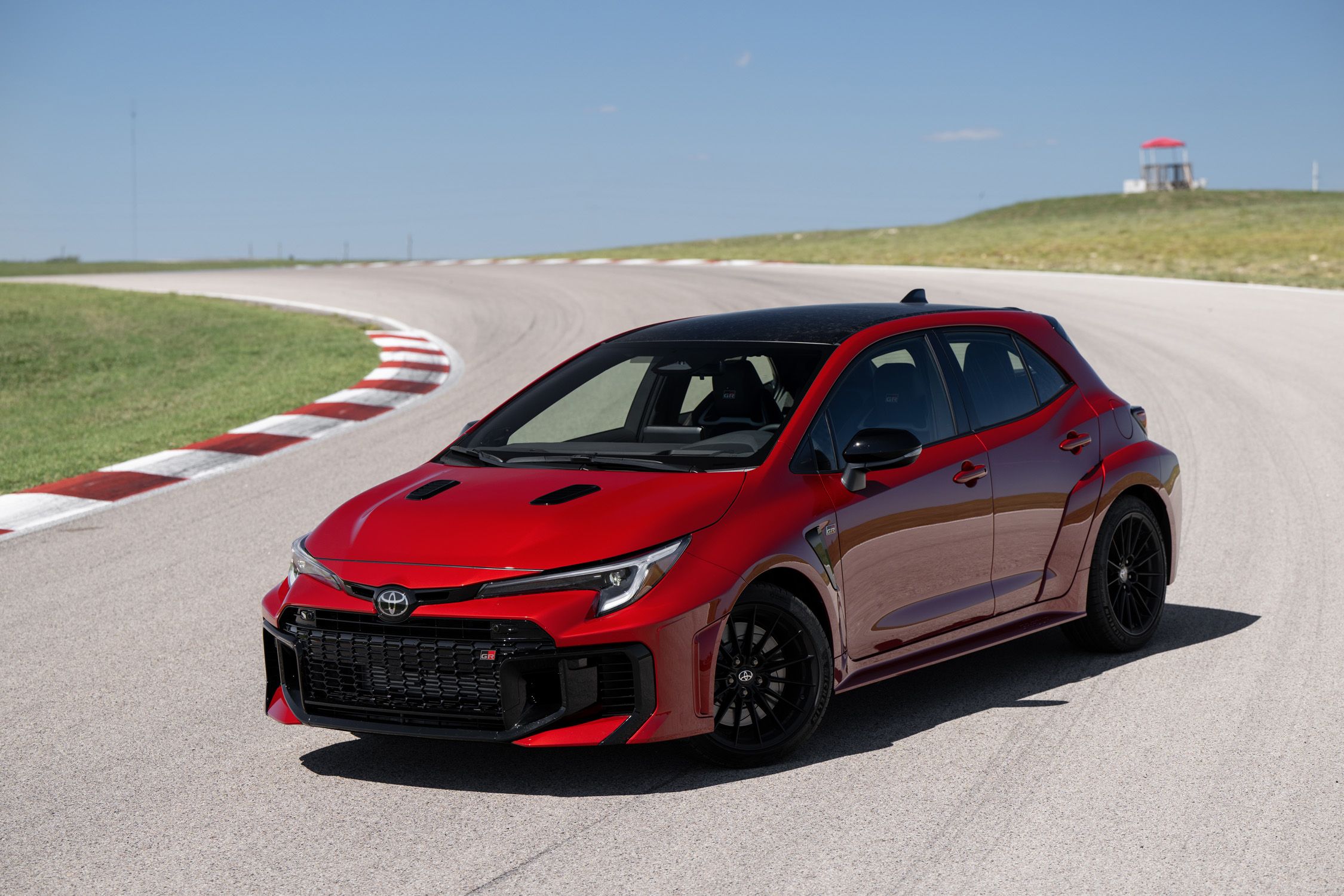
5. Toyota Corolla Hatchback (2019–2022)
The Toyota Corolla Hatchback, while a fun and sporty addition to the Corolla lineup, comes with a surprising amount of cabin noise—especially given its otherwise refined chassis.
Drivers often note that the hatchback’s sportier suspension setup, combined with larger wheels and lower-profile tires, results in a firmer ride that transmits more road imperfections and accompanying noise into the cabin.
This is most noticeable on coarse or patched roads, where the tire thrum and suspension feedback become difficult to ignore. While the car feels agile and planted, the trade-off is a more acoustically lively interior that doesn’t quite match the serenity of the Corolla sedan.
Wind noise is also more prominent in the hatchback compared to its sedan counterpart. The rear hatch design and slightly shorter wheelbase create more turbulent airflow around the vehicle, especially at freeway speeds.
While Toyota added some insulation compared to previous generations, it’s not enough to counteract the increased exposure from the body shape and aerodynamic compromises. This makes the hatchback slightly less composed than its sedan sibling in terms of long-distance comfort.
Additionally, the absence of acoustic glass in the base trims further allows wind and ambient noise to infiltrate the cabin. The interior design, while modern and appealing, doesn’t do much to counteract noise once it enters.
The materials are better than in past Corollas, but still not at the level needed to suppress road and powertrain noise effectively. The engine, a naturally aspirated 2.0-liter four-cylinder, performs well but becomes vocal under hard acceleration.
While this may add to the sporty character of the car, it’s not always welcome during routine commuting or long drives. The result is a car that looks sharp and drives well but falls short in delivering the kind of calm, composed ride that buyers in this segment increasingly expect.
Also Read: 5 Cars That Keep Working in Texas Heat and 5 That Overheat Instantly
In evaluating cabin noise across Toyota’s lineup, it becomes clear that a vehicle’s soundscape is more than a side note—it’s a powerful indicator of its identity, engineering priorities, and intended audience.
Toyota has done an admirable job creating vehicles that serve vastly different functions—from serene, hybrid-powered cruisers to robust, no-nonsense trucks designed for hard use.
In many ways, quiet cabins signal refinement, premium build quality, and attention to detail, while noisier interiors often point to design choices that emphasize durability, ruggedness, or economy instead. Neither is inherently good or bad—it all comes down to what the driver values most.
Models like the Avalon, Camry Hybrid, Highlander Hybrid, Venza, and Sienna show what’s possible when Toyota applies its legendary reliability to the pursuit of comfort and acoustic refinement. These vehicles make use of modern soundproofing techniques, electric drivetrains, and high-quality materials to create environments that are peaceful and inviting.
Whether it’s the near-silent electric cruising of the Venza or the family-friendly calm of the Sienna, these Toyotas elevate the driving experience by giving your ears a break.
In these models, long drives become less fatiguing, music sounds richer, and conversations remain clear—benefits that improve day-to-day quality of life far more than many flashy features or marketing buzzwords.
On the flip side, vehicles like the Tacoma, 4Runner, older Yaris, C-HR, and Corolla Hatchback demonstrate the trade-offs that come with building for utility, cost-effectiveness, or niche appeal. These Toyotas are incredibly durable and often loved by their owners for reasons that have nothing to do with cabin acoustics.
The Tacoma and 4Runner, for instance, thrive in conditions that would challenge or defeat quieter rivals. Their body-on-frame architecture, aggressive tread tires, and mechanical toughness all serve a purpose, just not one rooted in refinement.
Similarly, the Yaris and C-HR cater to urban drivers and young buyers looking for affordability and style, not luxury or silence. Ultimately, choosing a quiet or noisy Toyota comes down to understanding your needs as a driver.
If you commute daily, drive long distances, or prioritize relaxation and luxury, a quieter model is worth the investment. If you spend weekends off-roading or value simplicity and bulletproof mechanics, the buzzier models might suit you just fine.
What matters is that Toyota offers a choice, and that understanding these acoustic differences can guide smarter, more satisfying vehicle decisions. So the next time you step into a potential purchase, close the door, sit still, and just listen. Sometimes, the quietest cars speak the loudest truths about quality, comfort, and care.

